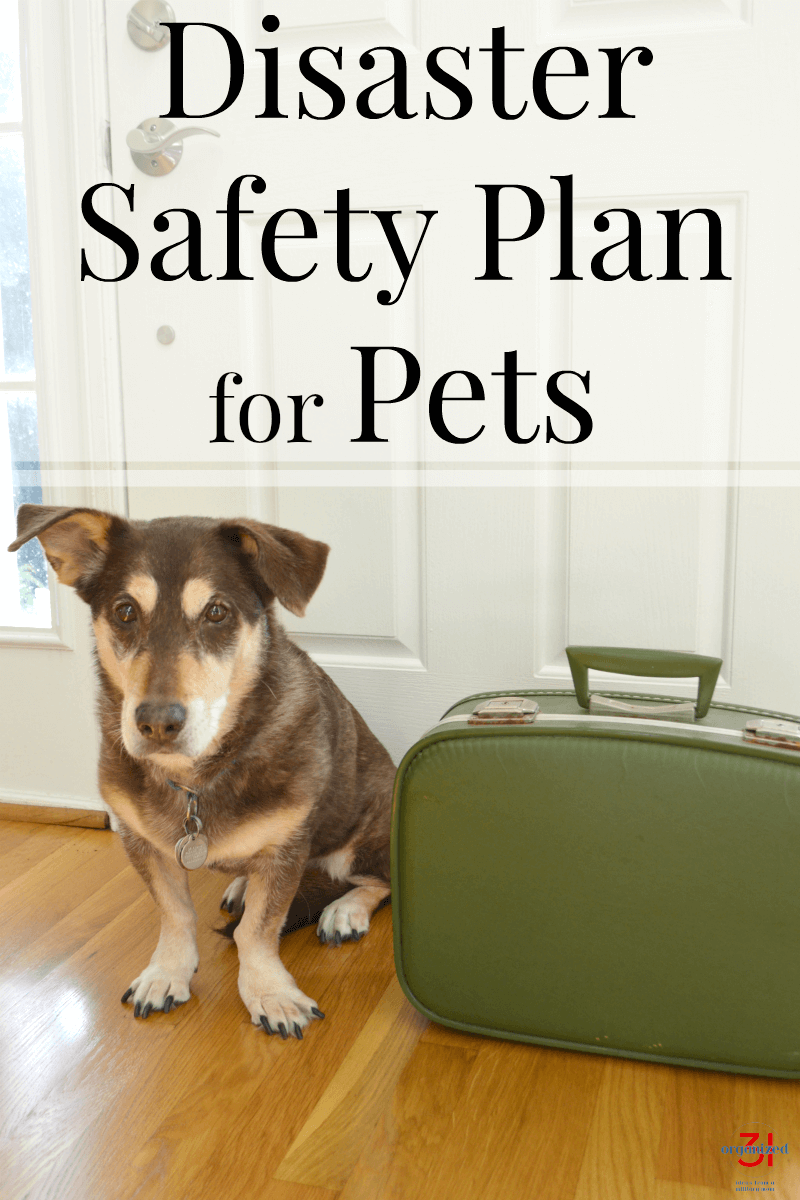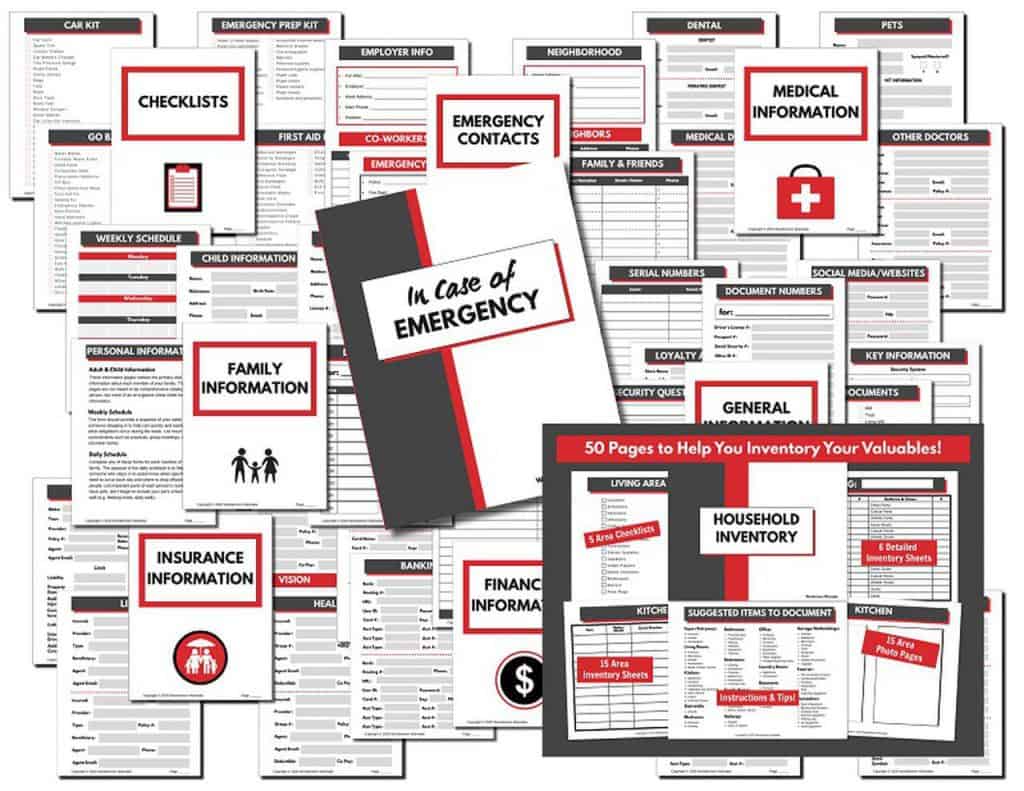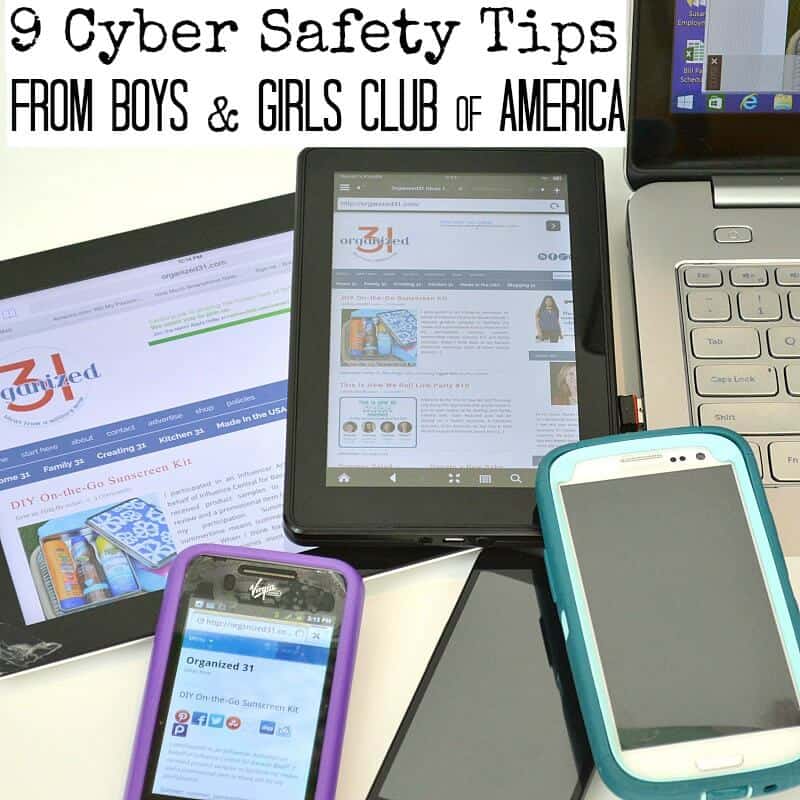Disaster Safety Plan Tips for Pets
This post may contain affiliate links provided for your convenience. We earn commissions if you shop through the links on this page. I am also an Amazon Associate and earn from qualifying purchases Read my full disclosure policy.
The past few years have shown us that we never know when a natural disaster may hit. It’s important to be prepared and know what to do if an emergency occurs and you have to evacuate. It’s important to recognize that if it’s not safe for you to stay in your home, then it’s not safe for your pets, either. They depend on you to keep them safe and cared for. Having a disaster safety plan for pets is a critical aspect of taking care of your pets.

Our pets are more than just pets, they’re part of our family. I’m sure your pets are the same for your family. Pets need extra considerations, planning and care during a natural disaster or emergency. If you wait until the chaos of the emergency and the evacuation, you will be left with very few choices for your pet. But if you plan now, before an emergency, you can make choices that will provide the best possible care for your pet, even during a disaster.
Disaster Safety Plan for Pets
Obtain and Post a Pet Rescue Sticker in Your Home
- A pet rescue sticker easily informs emergency and rescue workers that there are pets in your home.
- You can obtain pet rescue stickers from your local pet supply store or obtain a free one by filling out the online order form. Allow 6-8 weeks for delivery.
- Place the sticker where it is easily visible for rescue workers, usually near front door.
- Include the type and number of pets in your home and the name and number of your veterinarian.
- If you evacuate with your pets, write “EVACUATED” on the sticker, if time and safety allow.
Identify Disaster Risks in Your Area
Learn the disaster risks for your area. Each area has different risks and hazards. Familiarize you with what you can expect in your area.
Research and learn the customary disaster plan for your area.
- Will you be expected to evacuate?
- Where will you most likely be directed to evacuate to?
- Are there local accommodations or procedures for pets during a disaster?
Create a Disaster Safety Plan for Your Pet
Plan how you will provide safety for your pets if you have to evacuate. If at all possible, do not abandon your pets and leave them behind. Remember, if it isn’t safe for you, it isn’t safe for your pets. They won’t understand what is happening and won’t know how to safely survive the disaster.
Research and identify evacuation procedures and locations in your area.
- Do your local emergency shelters allow pets?
- If so, do they have limitations on numbers or types of pets?
- Will you most like relocate to a shelter or will you plan on going to a hotel or motel or will you stay with family or friends?
- Will those locations allow you to keep your pets with you?
- Check accommodations along your most likely evacuation route to locate pet-friendly accommodations.
- Create a list of these pet-friendly accommodations, including address, phone number, website and any specific limitations.
If you do not have your own vehicle to use during an evacuation, contact local authorities to learn about evacuation transportation and pet policies.

Research considerations for exotic pets and incorporate them in your emergency planning.
Research and identify individuals that can be backup caregivers for your pets in case the disaster hits when you are away from home or unable to return home to care for your pet.
- Make sure your backup caregiver is familiar with your pets and the disaster safety plan for your pets.
- Make sure the caregiver knows the location of your Disaster Safety Kit and important pet medical documents.
- Put your disaster plan in writing, identifying your backup caregiver and giving them permission to care for your pet in your absence in an emergency.
Keep Your Pet’s Identification Up-to-Date at All Times
If you and your pet become separated during the disaster, it’s important that rescuers can identify your pet and reunite you both as soon as possible. Ensure that all forms of identification for your pet has your current contact information. Make sure that your cell phone number is listed as your contact number since you may not have access to your home number.
- Tags – Have your current contact information listed on pet tags and keep the tags on your pets during disasters and evacuations.
- Microchip – Pet collars and tags can get lost, but microchips don’t. Seriously consider having your pet microchipped now, before a disaster occurs. Once your pet is microchipped, be diligent about keeping your contact information up-to-date.
- Licensing – Keep your local animal control license up-to-date.
Keep Vaccinations Up-to-Date at All Times
If you have to depart quickly, it’s important that all pets are current on vaccinations. You will be scrambling to find accommodations for your pets and up-to-date vaccinations will be a requirement at most pet care facilities. Vaccinations will also protect your pets during a higher risk time for illness and disease.
Create a Disaster Care Kit for Your Pet
Store your pet emergency kit in an easy-to-access location so that you can grab it and evacuate quickly. Pack the supplies in a waterproof and easy-to-carry bag or container.
Suggested items for your emergency kit:
- Pet Carrier
- Disposable Litter Pan & Litter
- Aluminum roasting pans work well.
- Extra Collars
- Extra Leash or Harness
- Extra Food & Water Bowls
- Nail Clippers and Other Tools
These tips for trimming cats’ nails will help you plan for the best care of your cat during a stressful time for you both.
- Trash Bags
- Paper Towels
- 5-day to 2-week supply of food (different agencies have different recommendations)
- Pop-top, Easy-to-top Canned Food
- Dry Food
- Be sure to replace food in your emergency kit every two to three months to ensure freshness.
- 7-day supply of water
- Pet First Aid Kit
- 2-week supply of pet medication
- Vaccination records and important veterinary records
- Create an Identification Sheet for Each Pet
- If you loose your pet, you will have this handout available
- The sheet should contain:
- Current photo of pet
- Name of pet
- Descriptive features
- Breed
- Age
- Sex
- Color
- Weight
- Neutered Status
- Microchip number
- Owner contact information
- Name
- Cell Phone Number
- Home Number
- Contact information for backup caregiver, relative or friend
- Toy
- Blanket
- A Boarding Information Sheet
- If you board your pet, you’ll have all important information readily available.
- Vaccinations and Dates
- Medications
- Allergies
- Behavior Issues
- Feeding Preferences and Schedule
During the Disaster
- Secure pets indoors at the first warning of a disaster. Pets may become disoriented and wander away from home in a crisis.
- Make sure all pets wear collars and tags with up-to-date identification information.
- ID tag should contain pet’s name, telephone number and any urgent medical needs.
- Place identifying information on the pet carrier.
- Pet name
- Your name
- Cell phone number
- If you are separated from your pet, do not search for him until it is safe to do so. You can’t help your pet if you end up injured.
- When it is safe to leave the shelter, contact animal control and rescue authorities about your missing pet.
- Contact the microchip company to notify them and make sure your contact information is up-to-date.
After the Disaster
After the upheaval of a disaster and evacuation, your pet’s behavior may change dramatically.
- Aggressive
- Defensive
- Changes in eating patterns
- Increased potty accidents
- Bolting or running away
- Disoriented
Knowing that your pet will most likely be impacted by the trauma of the disaster, you should:
- Monitor your pet’s behavior closely for changes.
- Protect them from safety hazards.
- Keep pets on a leash or under your direct control so they don’t become lost.
- Be alert for unexpected hazards at your pet’s level, e.g. dangerous debris, spilled chemicals and other substances.
- Consult a veterinarian for physical or behavior changes.
Use this 68-page emergency planning resource to plan for your entire family.
Your pet is part of your family. It’s critical to create a disaster safety plan that includes planning and care for your pet. If you don’t already have a pet disaster preparedness plan or your plan isn’t up-to-date, don’t wait, get started today.
For more ideas for your dog, check out the table below. You can scroll though the table and look for ideas or search for specific ideas with the magnifying glass in the upper right-hand corner (on desktop). Click on the topic and then click through the specific article.

I’m a mom of 3, a veteran, military spouse. I’ve moved into 20+ homes all around the world. My passion is helping busy people make the space and time for what’s really important to them. Learn more about Organized 31 and me.








Hi Susan, great article! I’ve always wondered what’s the best way to include my pets in emergency planning. Thanks for sharing this.
Happy you found this post, Leona. Planning for our pets is as important as planning for ourselves – they depend on us for everything.